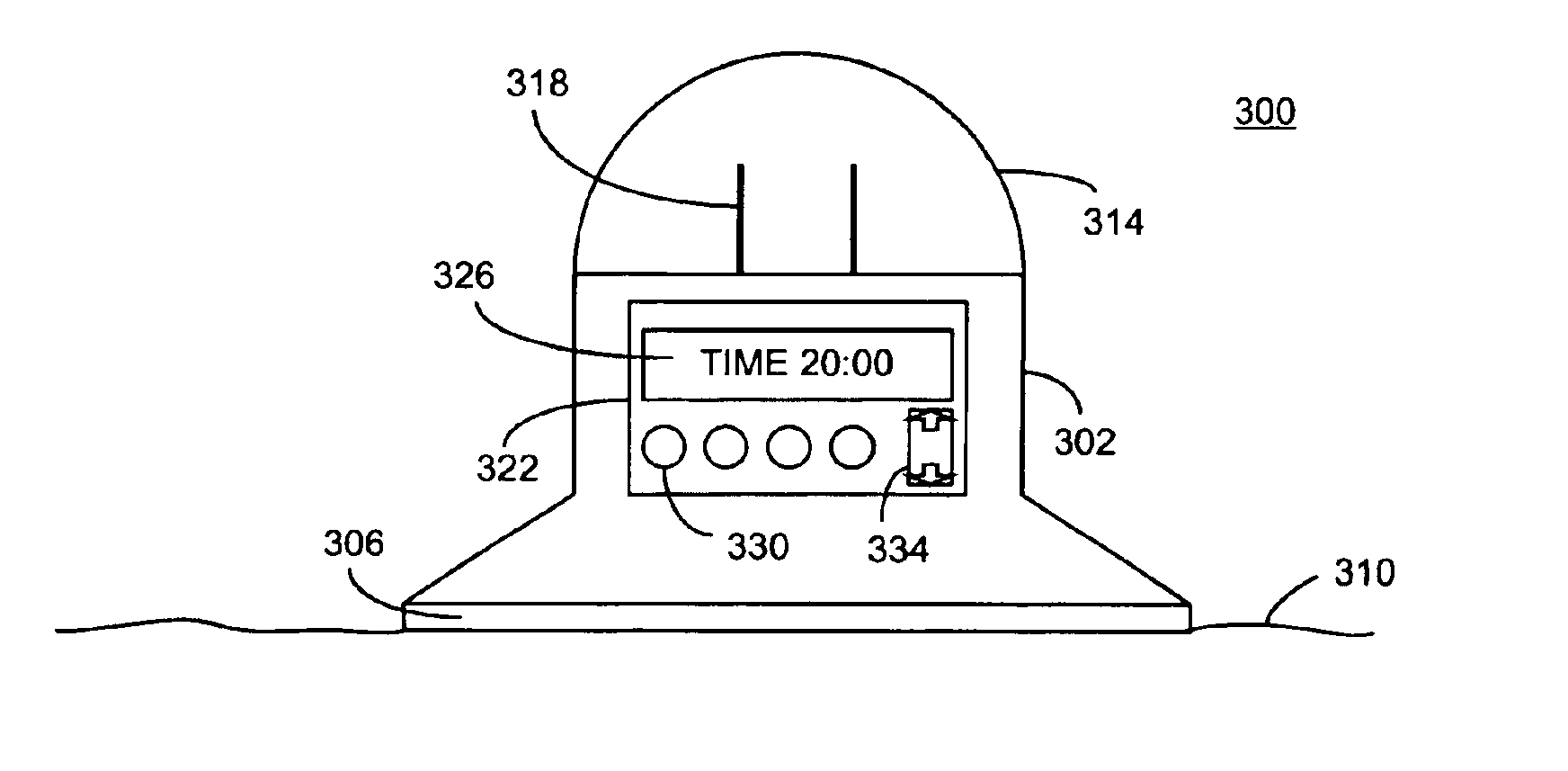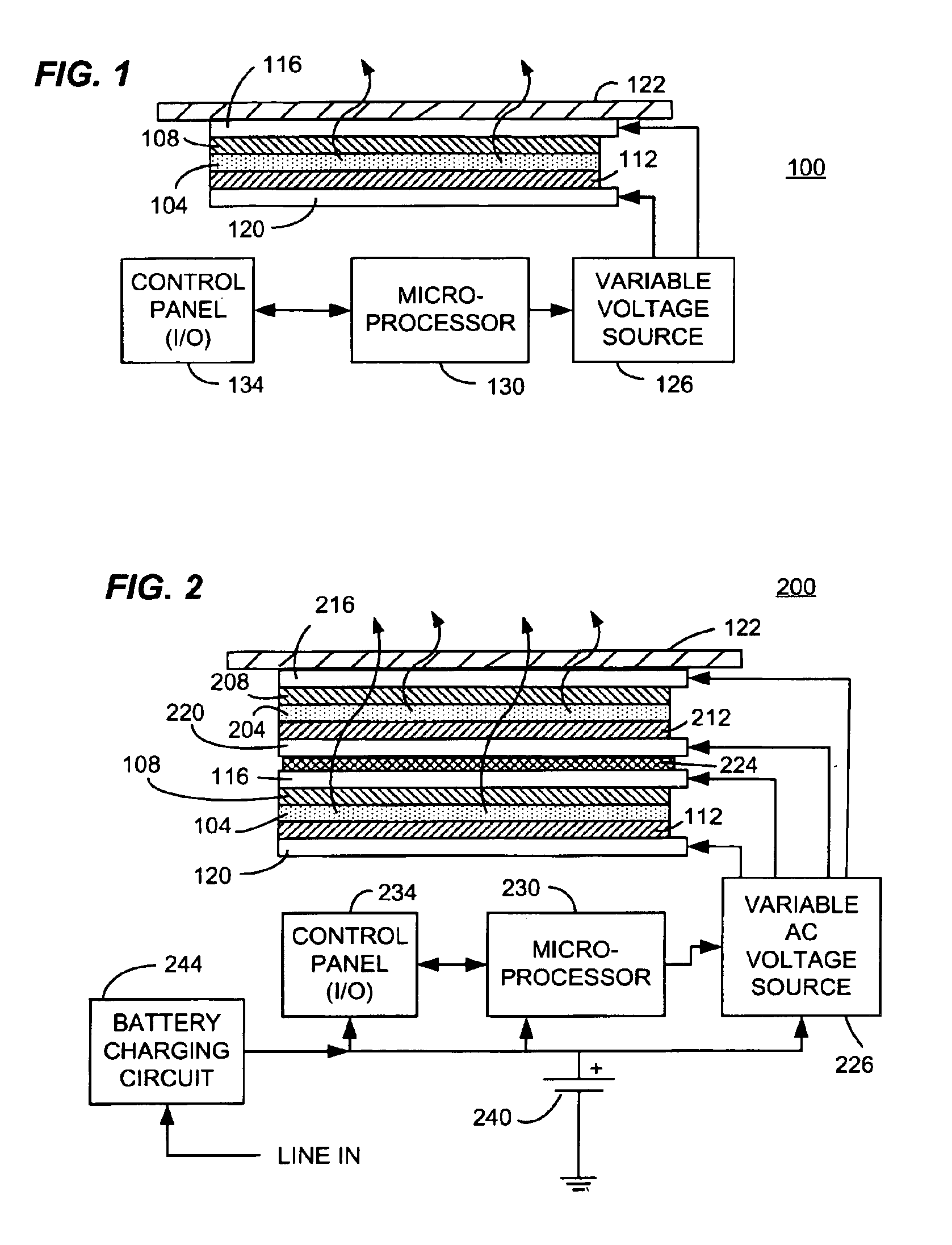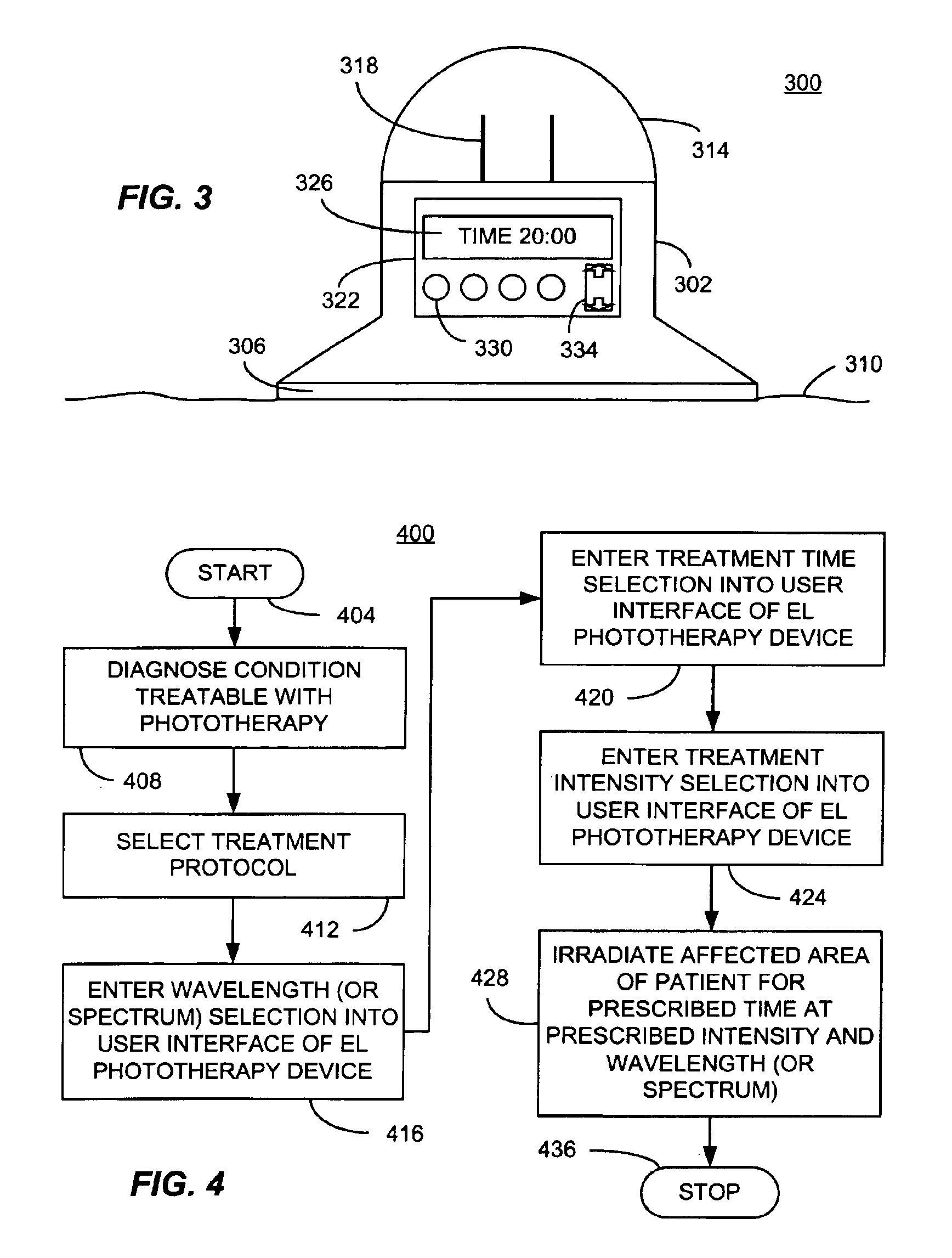Phototherapeutic treatment methods and apparatus
a technology of phototherapy and treatment methods, applied in the field of phototherapy, can solve the problems of inability to fully understand the mechanism that produces the beneficial effect, the liver of a child may be too young to conjugate bilirubin, and the potential to damage biomolecules, etc., and achieve the effect of detailed understanding the mechanism and achieving the beneficial effect of treatmen
- Summary
- Abstract
- Description
- Claims
- Application Information
AI Technical Summary
Problems solved by technology
Method used
Image
Examples
example
Treatment Protocol for Treatment of Chronic Wounds
In accordance with one exemplary treatment protocol, an EL light source is believed suitable for phototherapy treatment when the patient has been diagnosed with a chronic wound. A treatment protocol has been established by Salansky et al. and others that specifies that chronic ulcers or wounds can be treated by exposure to light in the range of 600-700 nm at a dosage of 0. 05 to 0.2 J / cm2 and power densities from 0.2 to 10 mW / cm2. This can be accomplished with a treatment period of approximately 0.33 minutes using a 10 mW / cm2 source for 0.2 J / cm2 dose. Since an organic TFEL light source using, for example, Erbium or Europium as a dopant can produce a light spectrum in this range, with an intensity of approximately 0.5-1 mW / cm2 exposure of the affected tissue to light from a TFEL light source of this type is believed appropriate to provide a similarly effective phototherapy by adjusting the exposure time to approximately between 3.3 a...
PUM
 Login to View More
Login to View More Abstract
Description
Claims
Application Information
 Login to View More
Login to View More - R&D
- Intellectual Property
- Life Sciences
- Materials
- Tech Scout
- Unparalleled Data Quality
- Higher Quality Content
- 60% Fewer Hallucinations
Browse by: Latest US Patents, China's latest patents, Technical Efficacy Thesaurus, Application Domain, Technology Topic, Popular Technical Reports.
© 2025 PatSnap. All rights reserved.Legal|Privacy policy|Modern Slavery Act Transparency Statement|Sitemap|About US| Contact US: help@patsnap.com



